If there is any exercise in patience, it is snaring wild game, particularly the rabbit. Snaring involves learning by trial and error and knowing your quarry.
Snaring is the most successful when you take the time to arm yourself with knowledge on this primitive hunting art form.
To be the most efficient and successful you will start the process by making a study of the rabbit’s habits, preferred environment, and favorite foods.
To have your snares be the most effective there are methods to building the different types of snares.
These include locating rabbit trails, knowing the difference in the rabbit’s size and activity for the location, placement of the snares for the terrain and modifying your snare accordingly.
Below we will explore the top snares for rabbits, what the benefits of each can be, how to make them, and tips and tricks for the most effective way to use them.
Why Rabbits?
In the time of the Great Depression, rabbit meat was as common as eating chicken for dinner. It was a staple dinner protein that helped many people make it through.
When red meat was hard to get during the Second World War with national shortages of many foodstuffs, rabbit meat provided the needed relief.
In many countries rabbit is rather common as to its bountifulness. In the US, it may be rather a rare option on the Millennial’s dinner table, but it is starting to regain its popularity for a few reasons.
Why Choose a Snare to Trap Rabbit?
Being one of the simplest traps to make, and one of the original DYIs of hunting, snares are produced cheaply and can be used in large numbers for bushmeat and small furbearers.
That being said, a lot of leg work and tweaking will come into play to see rewards for your effort.
Why Use a Snare vs. a Steel Trap?
Many steel traps were considered cruel and criticized by many animal welfare groups, so regulations were put into place in 2009.
I think snares are a safer and a more humane method than glue traps, foothold or limb traps, or body-gripping traps that usually leave the animal to die from injury or starvation before the trapper can return.
A guide of thumb is to check snares every 24-36 hours to ensure if you have caught another animal, or only partially caught a rabbit, you can choose to release it and also to make sure nothing eats your catch.
Basic Materials of a Rabbit Snare
The basic set up of every snare is an anchored cable or wire noose set to catch an animal as it passes through it.
All you pretty much need is some snare wire or any wire you may have, and maybe a knife or sturdy hatchet to cut branches to suspend your loop (or noose) from.
The thickness of your branches and how you orient them will depend on calculating the size and weight of the rabbit you wish to catch.
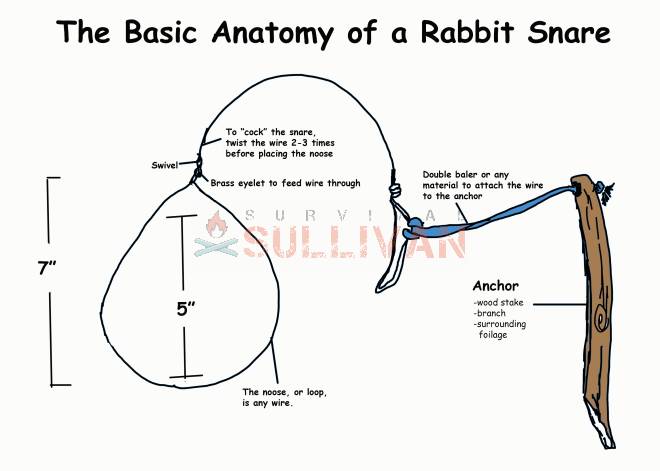
The Two Types of Snare Bases
Basic snare base: There are two types of bases to attach the noose from, depending on the area and size of the rabbit. The basic snare set up has a loop attached to a peg or surrounding branch.
When you set up the snare, you twist the wire leading to the loop, and this gives it snap and spring when the rabbit is in the noose.
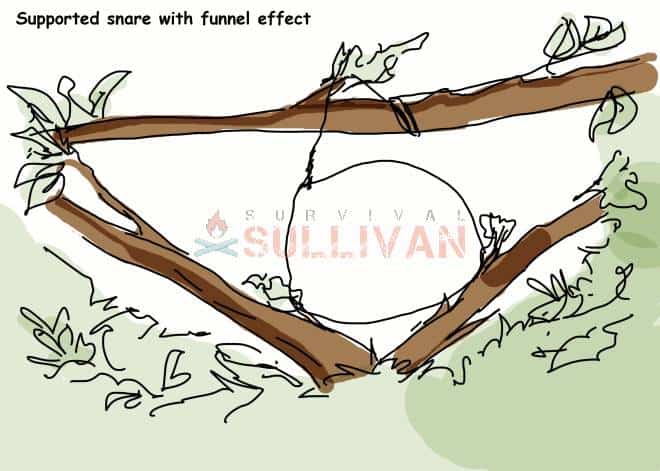
Whip pole snare base: For larger hares, or snowshoe rabbits you may want to use the whip pole set up. It is stronger and more anchored. When the whip pole is triggered, it is very fast to close. This type is used for larger game for that reason, but it can be modified down for a more secure rabbit snare.
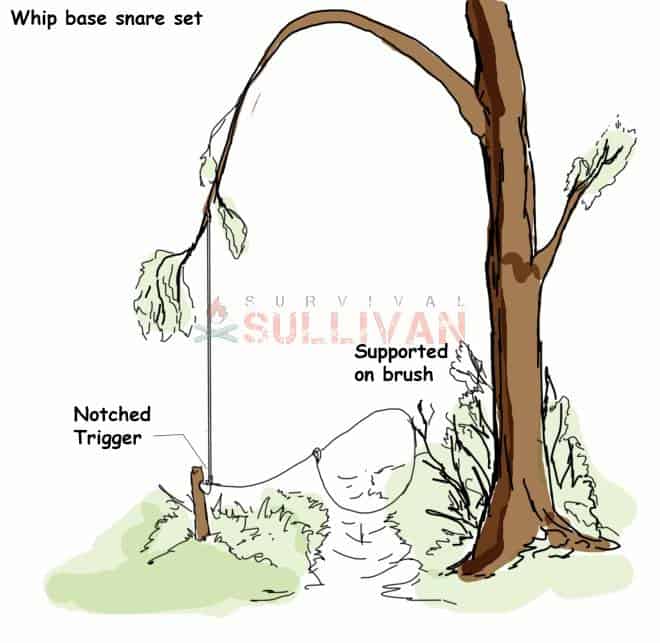
Estimating the Size of the Rabbit for the Snare
While you may not be able to estimate down to the ounce, accurately guesstimating will need to be done for correct placement of the snare.
If the snare is too small for the rabbit, it will close before it ever can be effective in trapping it. A noose that is too large and baggy will allow the rabbit to pass right on through the trap.
The dimensions of the snare and the location on the trail both will rely on estimation factors. Capturing live rabbits, or visiting a neighbor that has them may help in estimations of size.
Location of Your Rabbit Snare
To me, the most crucial consideration when thinking on where to place a rabbit snare is the location of the set.
If you can find a rabbit hole or established path through brush, that’s a great place to start. Just set your snare over the hole or path.
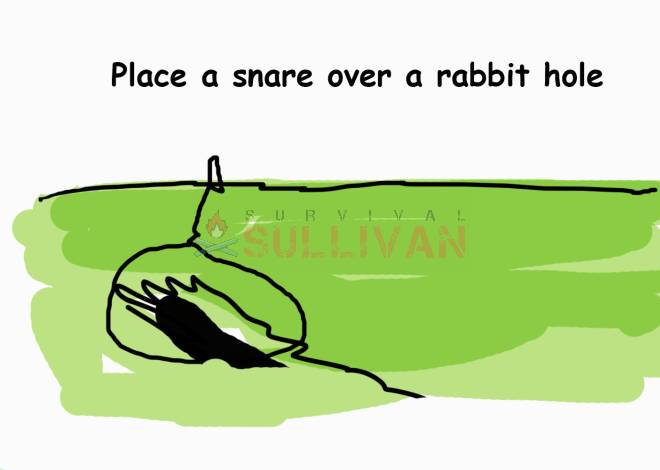
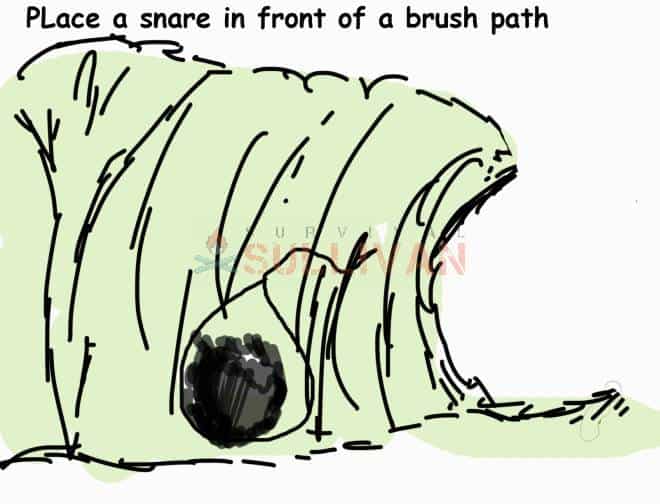
You need to use the habitual nature of the rabbit against it. Rabbits are very tricky and snares are not like bait traps, snares rely on using trails and locating paths and tracks. Rabbits are not likely to fall for traps that do not blend in and they will not explore it out of curiosity.
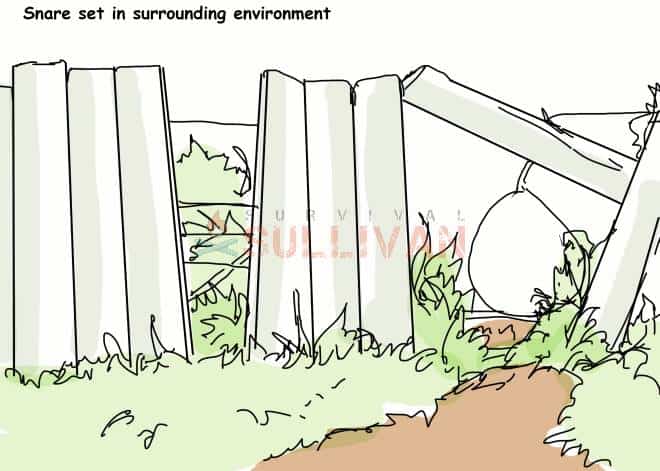
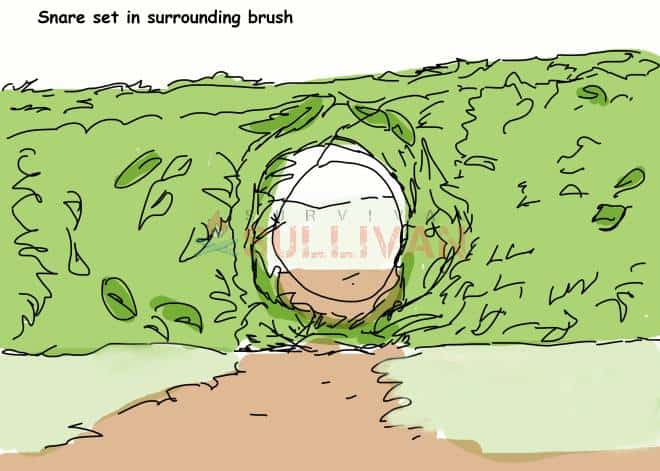
To Bait or Not to Bait? That Is the Question…
As placement on the rabbits known path or daily trail is the method of capture, there is a debate over using bait. Many trappers avoid using bait as it may lure other animals onto the trail, and the new scent may scare off the rabbits.
Bait, if you choose to use it, can be apples, greens, or carrots. This can be done with trial and error, if you are not seeing results in a day or two in a known population, maybe try a little bait to attract the rabbits.
Build Specifically for the Catch
An important thing to be mindful of when you are making any kind of snare or trap, is to construct it so that you only catch the animal you are setting the snare for.
For rabbit snares, you want to be sure that any supporting string or ties will break open with a heavier animal.
When you construct the snare use spring poles that will not be effective with heavier and larger animals and that will not be set off by smaller and lighter animals.
You will want to plan any snares to be placed well away from areas populated by pets, as that could be heartbreaking for the owner and you.
Be sure to place the snare in areas or paths that could be not run upon by children exploring. You do not want to be the cause of undue pain.
Now we have covered the whys and the basic thoughts behind using a snare for rabbits, let’s get started.
There Are 3 Main Rabbit Snares…
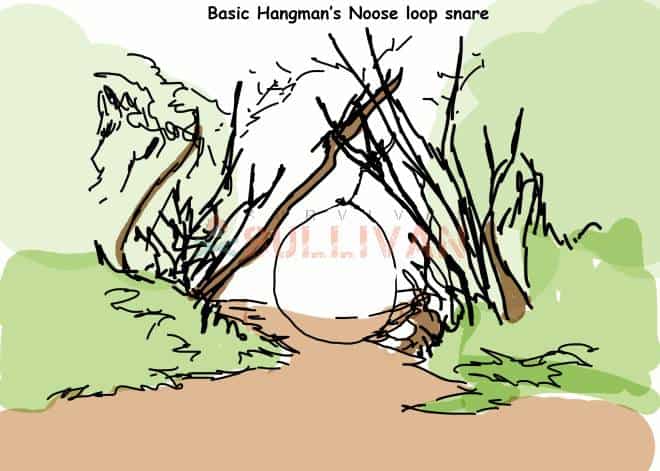
Hangman’s Noose Loop Rabbit Snare
The free standing hanging loop snare is the most basic of the 3 types, and the most cost effective. In all regards, an easy description would be that you are hanging a Hangman’s noose down to catch your rabbit.
Many materials can be used to attach the loop to a nearby branch, pole, or tree. It seems simple, and it is. It is also very effective, as the more the rabbit struggles, the tighter the noose becomes.
That is why snares are considered humane, as the rabbit stills and is rarely maimed or injured with this method. You can choose to release (say a small or weedy youth), keep it for breeding, or harvest your catch as meat and fur.
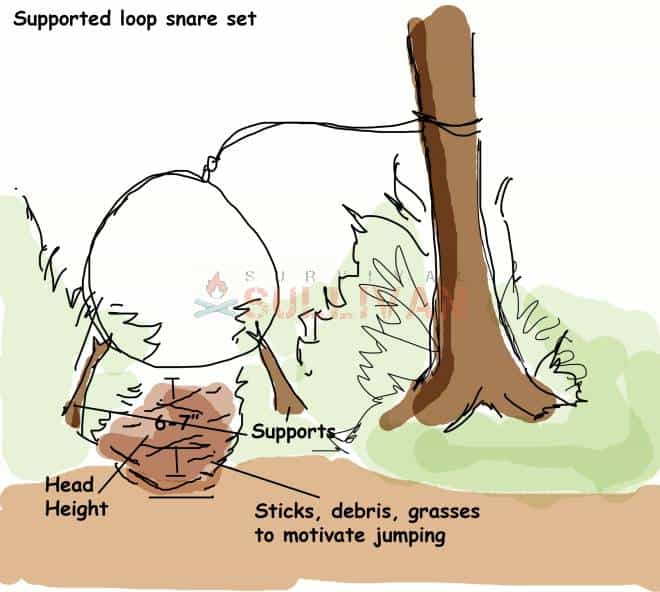
Supported Loop Snare Trap
The simplicity of the Hangman’s noose snare is why it’s so attractive and fast to build, but it can have a few drawbacks.
If you plan to trap over a period of time, or you are not that familiar with the trails and habits of your prey yet, you may want to offer incentive for the rabbit to use the path to the trap.
This trap is also effective if you do not know the exact measurements to make adjustments for the height of the Hangman’s Noose.
In this version, you will funnel the rabbit into the trap by limiting its options for passing that way. The only way to pass will be through your trap.
This is accomplished using branches, twigs, sticks or an existing fence around the snare. Blocking the sides will avoid it just walking by, and using material under the trap will give it motivation to jump, thereby catching it.
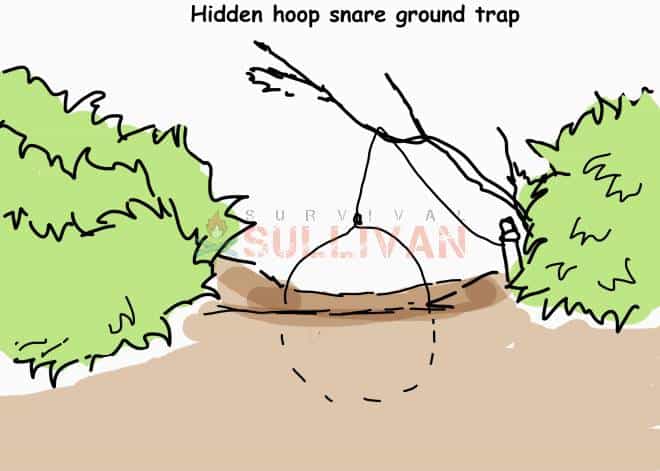
The Hidden Hoop Snare Ground Trap
As the name suggests, this trap is based more on the ground rather than hanging. I would use this trap to catch younger rabbits too nervous to venture far, or older bigger rabbits that may not be spry enough to jump into the other traps (or are too wise to be funneled into a blind opening).
The hoop snare consists of a wire that is half hidden by being buried in the ground. When the rabbit passes through the hoop, it tightens and holds the animals.
This one is a bit more complicated to use. But if you are seeing large bunnies and they are avoiding your traps, or you’d like fresh tender young bunny, it is a good alternative.
Happy Hunting!
While there are many methods and variations on traps throughout history, we have found these are the 3 most effective snares for trapping rabbit.
Just remember, the more time and patience you have in building your snare sets, the more successful you will be!

Growing up in the Bluegrass State, it was a point of familial pride to be able to shoot, trap, identify plants and track animals. Summer camps helped us be well versed in camping, weapons, and survival skills from a young age. We were surrounded by such a lush environment, and we used the resources we had.
I met my soulmate in my happiest place to be- a seemingly enchanted winding trail next to a beautiful wooded glen- where I spent as much time exploring as I could during daylight hours with my trusty four-legged friends.
The bucket list includes living the days painting and writing on a fully self-sufficient homestead, off-grid with our animals and family and plenty of land for the significant other (who I think is a true artist at weapons and living that way) to shoot to his heart’s content. Naturally organic living for us and the animals is a goal.

Be sure to check the local laws. Snares may be illegal where you live. Probably not a problem in SHTF scenario.
Leg-hold traps are NOT cruel and painful. Legal in PA if you have a license. Also must check traps at least every 36 hours.
What is the preffered wire to use, I have copper wire which is quite springy?